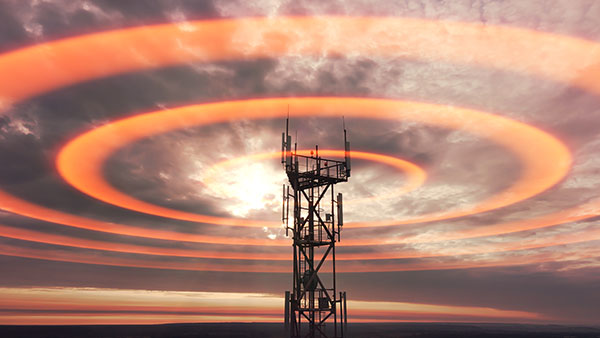5G safety in question: FCC moves to reduce environmental reviews despite health concerns
09/27/2025 / By Willow Tohi

- The Federal Communications Commission (FCC) plans to exempt specific cell towers and 5G builds from environmental and historic preservation reviews.
- Critics argue this move weakens protections under the National Environmental Policy Act (NEPA).
- Independent experts link 5G radiation to brain damage, dementia and increased cancer risk.
- Technologists and health advocates call for stricter regulations on RF radiation and a moratorium on 5G deployment.
- Public comments are invited before a final rule is issued in October 2025.
The Federal Communications Commission (FCC) is moving to ‘streamline’ its environmental review process for certain wireless projects to “promote efficiency and certainty” for telecommunication developers. The proposed rulemaking would exempt specific types of installations, including small cell antennas, cell towers under 200 feet and rural 5G builds, from National Environmental Policy Act (NEPA) and National Historic Preservation Act (NHPA) reviews. This comes at a time when independent experts are raising warnings about potential health risks from 5G radiation, including increased risk of brain cancer, dementia and Alzheimer’s disease.
The FCC’s move: Streamlining or stripping protections?
Critics like Miriam Eckenfels of Children’s Health Defense’s Electromagnetic Radiation (EMR) & Wireless Program argue that the FCC’s new rulemaking is more about industry capture than consumer protection. “NEPA is one of the few safeguards against unchecked industry expansion,” Eckenfels said. “The FCC is treating NEPA as though compliance is optional.”
The proposed changes would exempt wireless projects that don’t require antenna structure registration, such as cell towers under 200 feet and small cell installations, from NEPA review requirements. This move comes amid increasing public concern over the health impacts of 5G technology. Last year, nine independent experts in the field of radiofrequency radiation published findings in the Annals of Clinical and Medical Case Reports, calling for stricter regulations on RF radiation from authorities and a pause in deploying 5G technologies.
Health risks: The science behind 5G’s potential hazards
A study funded by the National Institutes of Health (NIH) suggests that 5G-induced radiofrequency radiation can lead to brain damage and possibly increase the risk of dementia and Alzheimer’s disease. Non-ionizing RF-EMF can behave like high linear energy transfer ionizing radiations, damaging living skin cells and generating free radicals in a short distance. These free radicals can cause oxidative stress, which increases cancer risk by suppressing apoptosis, promoting proliferation and stimulating angiogenesis.
In a peer-reviewed article, the 9 experts stated: “Controversies still exist regarding the safety of 5G technology. However, evidence emerging from laboratory research and human case studies indicates the potential risk of adverse health outcomes from RF-EMF exposure.” They recommend strong regulations and stress the importance of an impartial team of qualified scientists to thoroughly assess the risks before proceeding with 5G deployment.
NEPA and reduced environmental safeguards
NEPA was enacted in 1970 as a response to growing environmental concerns. It established a process requiring federal agencies to consider the environmental impacts of proposed actions, promoting transparency and public involvement. However, the Supreme Court’s recent curbing of NEPA’s scope, alongside Congress’s 2023 decision to cut certain NEPA reviews, has emboldened the FCC to move faster on wireless infrastructure deployment.
“It’s about striking the right balance,” FCC Chairman Brendan Carr said in a statement. “Outdated environmental regulations are delaying broadband deployment. We need to simplify permitting processes and clear the way for new infrastructure builds.”
Public response and ongoing debate
Dozens of safe tech groups and advocates have submitted collective comments to the FCC, urging the agency to expand and strengthen, rather than reduce, its environmental review procedures. “We need to protect people’s health and give them a voice in their environment,” Wilkens argued.
Technology attorney Odette Wilkens said, “The FCC’s notice of proposed rulemaking to ‘modernize’ NEPA is a sarcastic reference because its purpose is to diminish environmental review and historic preservation review.”
Striking a balance between progress and protection
The FCC’s proposal to streamline environmental reviews for wireless infrastructure projects is a contentious issue that pits advancements in technology against public health concerns. While the FCC aims to promote efficiency and certainty for telecommunication developers, critics argue that the move hollows out critical environmental protections and reduces public input. As the debate unfolds, stakeholders will need to carefully consider the long-term environmental and health implications of 5G deployment. Public comments will be crucial in shaping the final rule, and the stakes have never been higher.
“5G deployment must not come at the expense of public health and environmental protection. Striking a balance between innovation and safety should be our priority.”
Sources for this article include:
Submit a correction >>
Tagged Under:
big government, Big Tech, Brain, cell phones, cell towers, censorship, dangerous, EMF, future tech, Glitch, information technology, outrage, radiation, suppressed
This article may contain statements that reflect the opinion of the author
RECENT NEWS & ARTICLES
BrainFunction.News is a fact-based public education website published by Brain Function News Features, LLC.
All content copyright © 2018 by Brain Function News Features, LLC.
Contact Us with Tips or Corrections
All trademarks, registered trademarks and servicemarks mentioned on this site are the property of their respective owners.




















